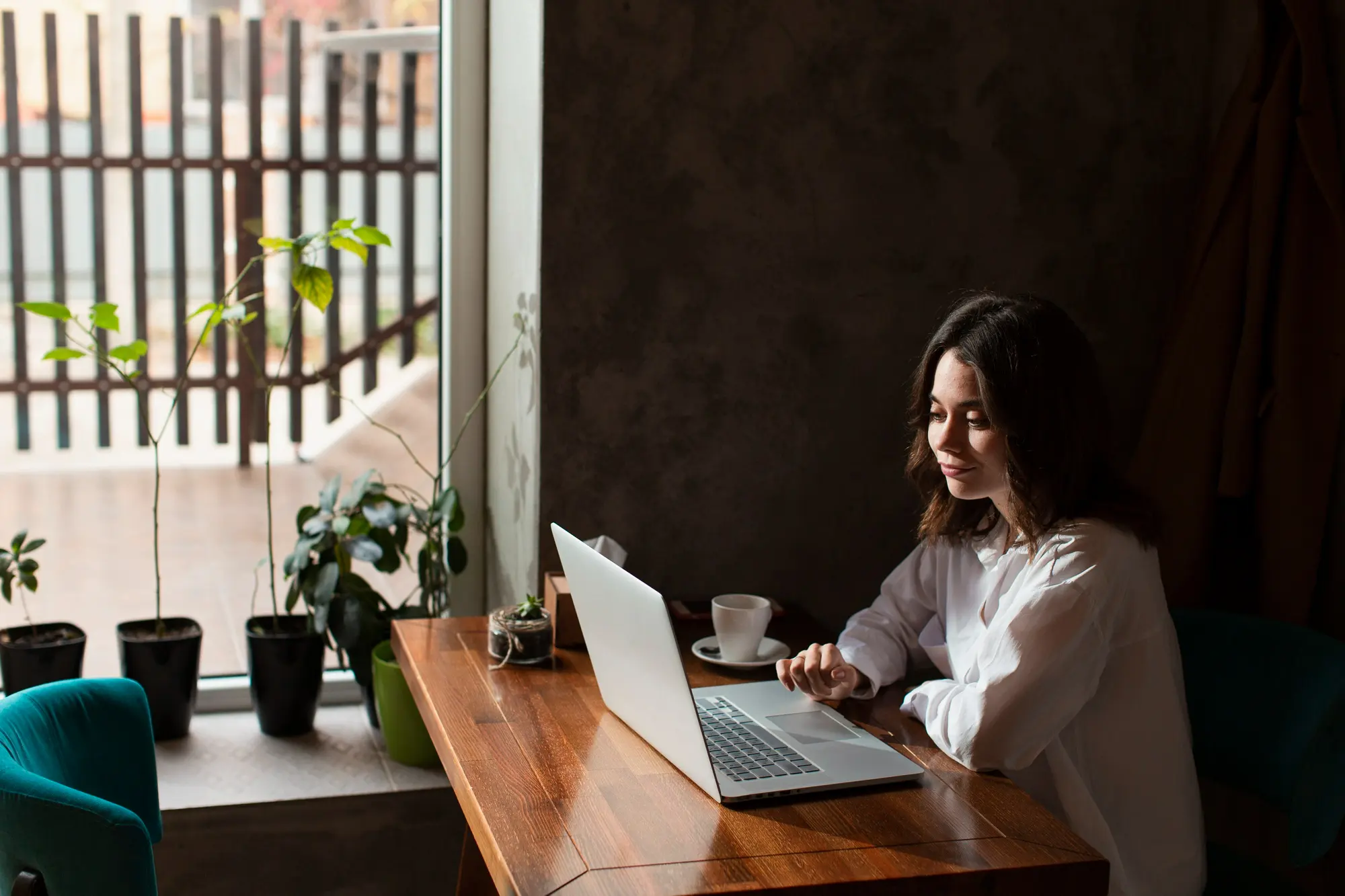Digital boundaries are crucial for protecting mental health, especially for creators whose work constantly overlaps with the online world. Mental health shapes how we think, feel, and function, influencing how we handle stress, connect with others, and make decisions. For digital creators (like me), maintaining well-being can be challenging because you’re not just using technology; you’re building a career with it, which makes preserving your energy and focus a top priority.
According to Billion Dollar Boy’s recent survey, over 59% of content creators report feeling burned out or mentally exhausted from constant online demands. The pressure to reply quickly, post consistently, or “stay relevant” isn’t just a personal struggle; it’s an industry-wide challenge.
This is where digital boundaries come in. These are the rules or limits you set for yourself around how you engage with tools like your phone, social media, email, or streaming platforms. Boundaries help protect your mental space and energy, especially when your work depends on being online.
Being constantly plugged in might feel normal, but it’s not always healthy. Taking care of your digital well-being means learning to say no to some things so you can say yes to your peace of mind.
The Impact of Digital Technology on Mental Health
Most creators rely on digital tools to do their job. That part is expected. But when work tools double as personal spaces, it becomes hard to switch off.
Checking stats at midnight. Answering DMs during lunch. Feeling guilty for not posting. These small habits build up—and your mental health pays the price. Research by the National Library of Medicine shows that frequent social media use is linked to higher levels of anxiety, depression, and sleep disruption, especially for those whose work depends on constant engagement.
An article by Jean-Marc Stuppard, a music producer and digital wellbeing researcher who focuses on creators’ mental health, notes that fatigue and self-doubt often stem from feeling like you must always be “on.” When your work is public, it’s tempting to measure your worth by likes, views, or engagement metrics—but doing so can reinforce imposter feelings and anxiety.
And it’s not just about numbers. Scrolling through feeds filled with other people’s highlight reels can trigger comparison traps, leaving creators feeling inadequate or stuck. Being online 24/7 also affects sleep, focus, and emotional balance. Without quiet, screen-free time, creative thinking and emotional recovery are harder to achieve.
Even if you love your work, too much exposure to screens and performance pressure chips away at your mental clarity. Without boundaries, technology can start running the show—and that’s not good for anyone.
Real-Life Examples of Digital Boundaries for Creators

Digital boundaries don’t have to be strict rules. They’re gentle habits that help you stay in control of your time, focus, and mental energy. Small adjustments can make a big difference.
Realistic Digital Boundaries That Creators Often Use
- No notifications during downtime – Mute work-related apps after 7 PM or on weekends. According to the National Institute of Health, reducing notifications lowers stress and improves sleep quality. Tools like Focus Mode on iOS/Android or Do Not Disturb schedules make this easier.
- Phone-free mornings or evenings – Start or end your day without screens, even for 30 minutes. Personally, I’ve found that morning journaling or a short walk without my phone improves focus and creativity before starting work.
- Set work hours for digital tasks – Answer emails, messages, and comments only during a defined window. Scheduling apps like Google Calendar or Trello can help create structure and reduce constant mental load.
- Batch content creation – Plan and schedule posts in advance so you’re not always in “creation mode.” Platforms like Later, Buffer, or Hootsuite allow scheduling across multiple channels, freeing up time for offline activities.
- Use separate profiles – Keep work and personal accounts distinct to avoid blurred lines. This helps prevent emotional spillover from work to personal life and vice versa.
- Limit social media use – Set app time limits or use reminder tools like Screen Time, Freedom, or RescueTime. Research from the American Psychological Association shows that timed social media breaks can reduce anxiety and improve attention span.
If you’re unsure where to start, the Digital Boundaries Toolkit from The Self-Investigation offers practical steps to adjust your digital habits and reclaim focus. This resource is curated by mental health and productivity experts to help creators build sustainable online routines.
Key boundary to adopt today: Stop apologizing for logging off. You’re allowed to rest. You’re allowed to not be available all the time. Setting this boundary isn’t a luxury—it’s essential for your creativity and mental health.
Why Setting Digital Boundaries Supports Mental Health

Many creators reach a point where the thing they once loved, making content, starts feeling heavy. This is often a sign of digital burnout, a state marked by exhaustion, reduced motivation, and increased stress. You’re not alone if you feel stuck, disconnected, or mentally drained from being online too much. According to the Tasty Edits survey, 75% of content creators reported experiencing stress or anxiety directly related to online work.
Digital Boundaries Help in Several Concrete Ways
- Recharge your brain: Limiting constant input gives your thoughts space to settle, which restores creativity. A study published in PubMed Central found that reducing screen time is linked to lower cortisol (stress hormone) levels and improved cognitive performance. (Time to unwind!)
- Make room for real-life connections: Unplugging helps you reconnect with people and moments offline, improving social well-being and emotional balance. (Have a coffee/brunch with a friend)
- Stay in control: Instead of reacting to every ping, comment, or post, you decide when and how to engage. This reduces stress and the feeling of being “always on.” (Less triggers for you!)
- Reduce stress and comparison: Less screen time means fewer opportunities for social comparison and online pressure, lowering anxiety and emotional overload. (Again, fewer triggers!)
- Model healthy habits for your audience: Demonstrating balance online signals to your community that boundaries matter, fostering authenticity, and sustainable content creation. (It’s giving a more genuine and authentic image for you or your brand)
Experts emphasize the importance of professional digital boundaries. For example, the American Psychological Association (APA) notes that therapists and healthcare professionals are trained to protect their digital boundaries—not just for privacy but to safeguard energy and prevent burnout.
If your phone starts feeling like a boss breathing down your neck (throw it! Just kidding!). It’s a sign. You don’t have to be online 24/7 to succeed. Creators who implement limits often produce higher-quality content and maintain a more sustainable workflow.
Key takeaway: Setting digital boundaries isn’t just about “logging off”; it’s about protecting your creativity, mental health, and long-term success.
FAQs
Q1. How do digital boundaries improve long-term creativity for creators?
Digital boundaries reduce mental clutter and prevent burnout, giving your brain time to rest and recharge. When you unplug from constant notifications and comparison traps, your creativity can flow more freely, leading to higher-quality content and innovative ideas over the long term.
Q2. Can digital boundaries help prevent anxiety and depression related to social media?
Yes. A study by the American Psychological Association shows that limiting social media use and controlling online engagement can reduce feelings of stress, anxiety, and depressive symptoms. By setting boundaries, creators create a healthier relationship with their platforms, focusing on meaningful interactions rather than constant metrics or comparisons.
Q3. How do I maintain digital boundaries without affecting my audience or work?
Start by communicating your boundaries clearly—for example, letting your audience know when you check messages or post content. Use scheduling tools, batch content creation, and separate personal and professional accounts to stay consistent online while protecting your mental health. Over time, your audience will respect your balance, and your workflow becomes more sustainable.
Give Yourself the Space You Deserve
You’re more than your feed, and your worth isn’t tied to how much you post. Taking care of your digital well-being is an act of self-respect, not weakness. If you’re feeling drained, it’s okay to pause.
Start small: Choose one boundary today—turn off notifications, log off after dinner, or take a phone-free morning. Do it for you, not the algorithm.
Permit yourself to breathe, to step away, and to reclaim your focus. Your life outside the screen is just as real, and just as meaningful, as the one online.
Challenge: Pick one digital boundary and stick with it for a week. Notice how it affects your mood, creativity, and sense of control. Small steps can lead to lasting changes in your mental well-being.





0 Comments